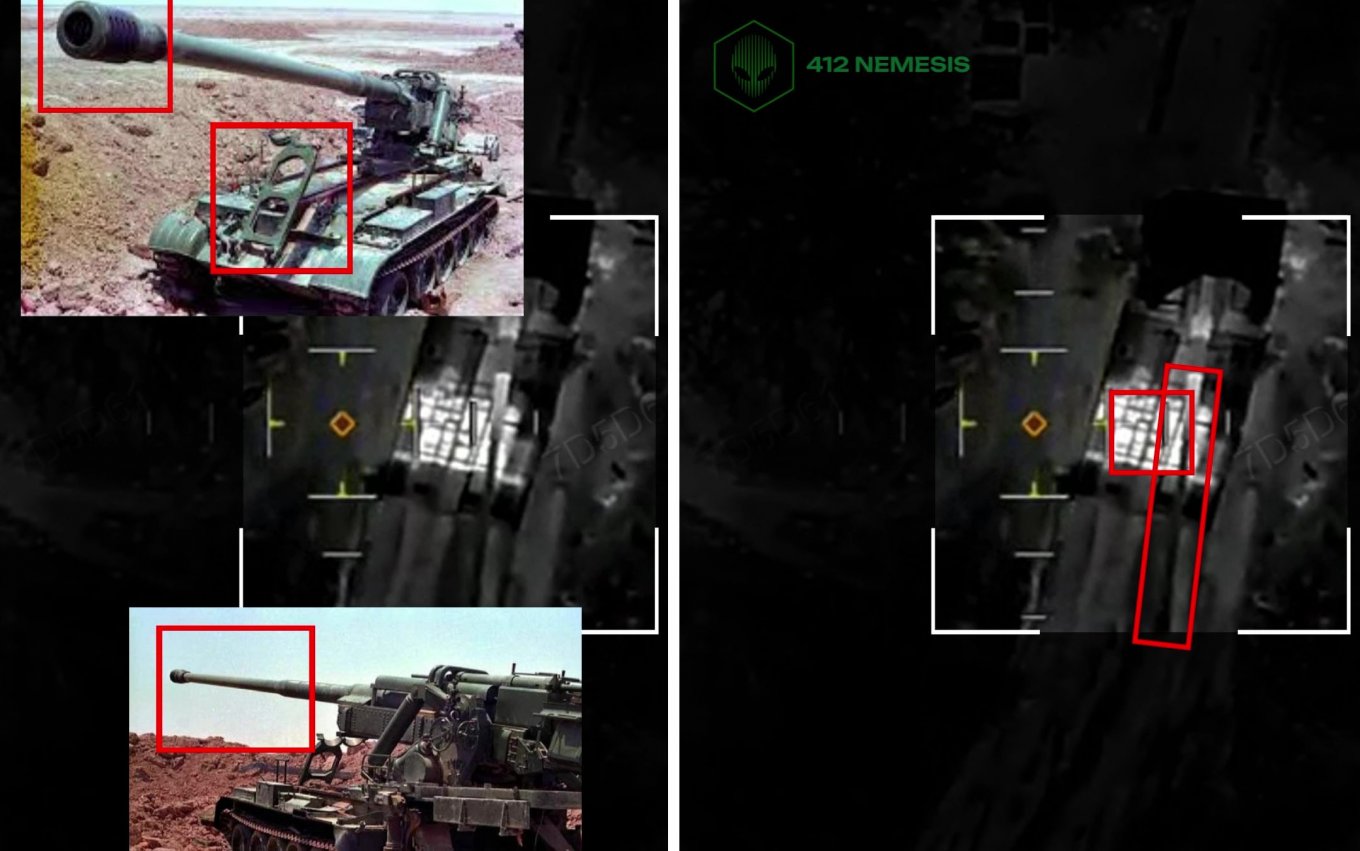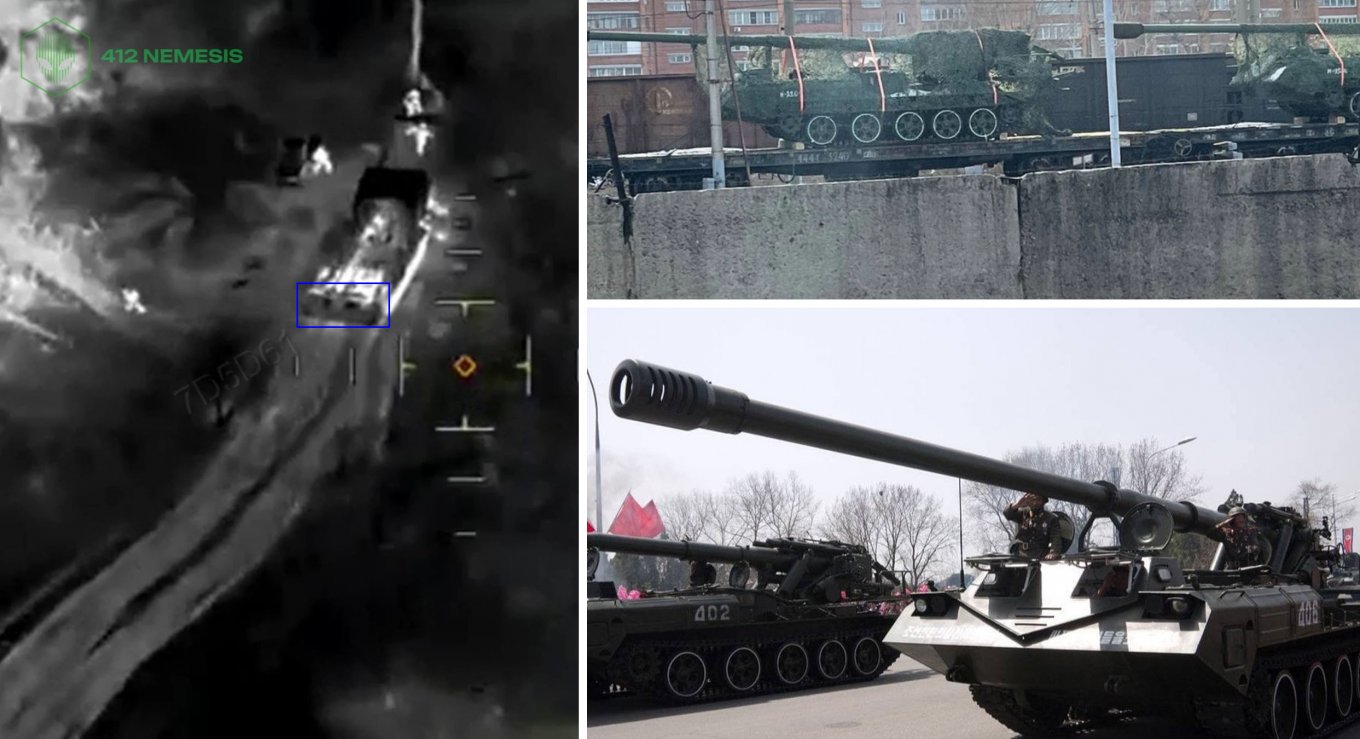All indications suggest that, for the first time, the North Korean self-propelled artillery system M-1989 Koksan has been hit, which had only recently arrived at the front line. The corresponding video showcasing the destruction of this artillery system was released by the 412th Separate Drone Systems Regiment NEMESIS.
The video captures a successful drone attack involving the dropping of an artillery system, which has several distinctive features that allow for its identification as a North Korean self-propelled artillery. The footage was recorded through a thermal imaging device, indicating that it was likely a night operation. While the exact location of the events is not specified, it is mentioned to be in the Luhansk region.
As demonstrated in the video, the identification of this being a "Koksan" is supported by the barrel fixation system and the barrel itself, which features a variable thickness and a characteristic muzzle brake.

However, from the perspective of Defense Express, we can add another detail that is specific to the M-1989 Koksan, the transportation of which by rail across Russian territory has been documented multiple times. This detail includes the commander's and driver's hatches located in the frontal part of the self-propelled artillery's body, which appear as dark (cold) squares in the thermal imaging footage.

It is worth noting that the hit on the self-propelled artillery occurred in the area where the engine-transmission compartment is located, suggesting that the "Koksan" may have sustained damage to its power unit. Additionally, the 170-mm barrel of the system could have suffered fragmentary damage. It is quite possible that this "Koksan" will now travel back over 8,000 kilometers by rail to North Korea for repairs.
Ultimately, this episode of hitting the North Korean self-propelled artillery reveals a series of its shortcomings. In particular, it highlights that this open artillery system lacks armor protection and has zones that are easily targeted by drones, which cannot be covered by the traditional "mangal" setups used in Russia. Furthermore, the "Koksans," due to their chassis based on the Chinese copy of the T-54 tank - Type 59, exhibit relatively low mobility.
It is worth recalling that the "Koksan" self-propelled artillery operates with a unique 170-mm caliber - this again points to Russian imperialism and the Third Reich, as the roots of this design are quite unexpected. Additionally, despite declarations of a firing range of 60 km for this self-propelled artillery, this is only achievable with active-reactive shells, which have never been widespread and have never ensured the necessary accuracy.
Regarding the number of such systems, according to the Main Intelligence Directorate of the Ministry of Defense of Ukraine, Russia has already received 120 of these self-propelled artillery units and expects to receive another 120 units of M-1989 Koksan by 2025.